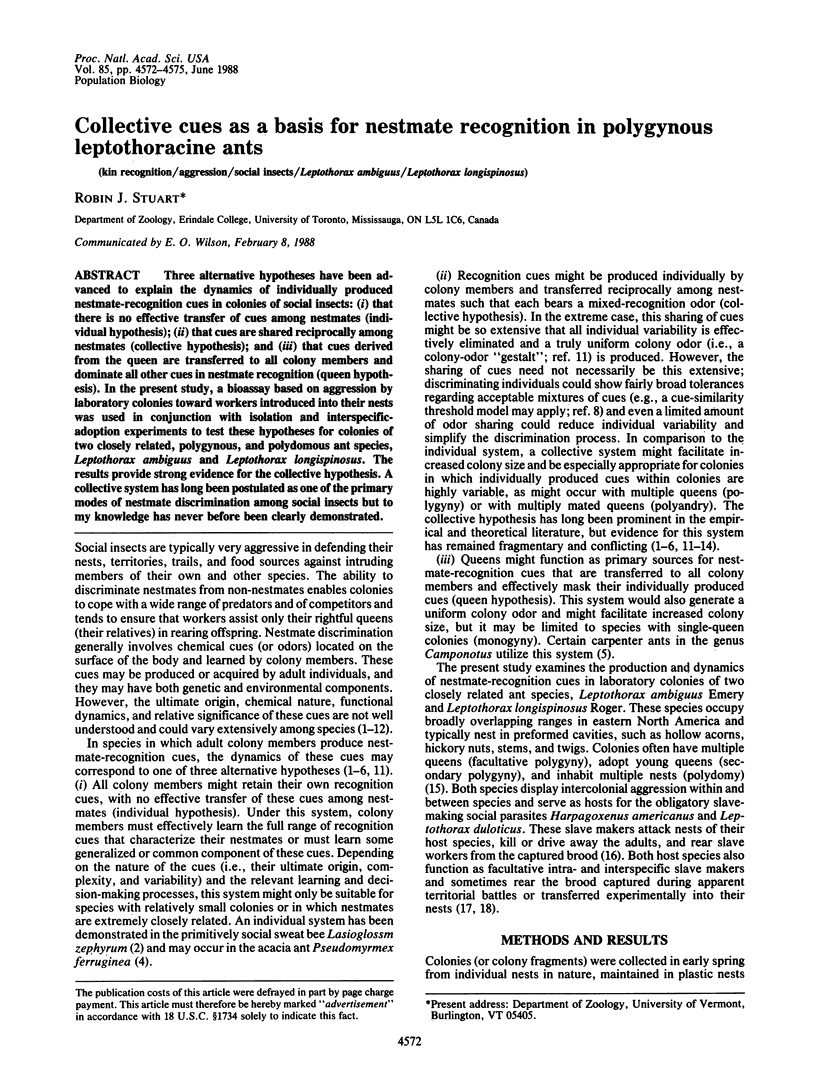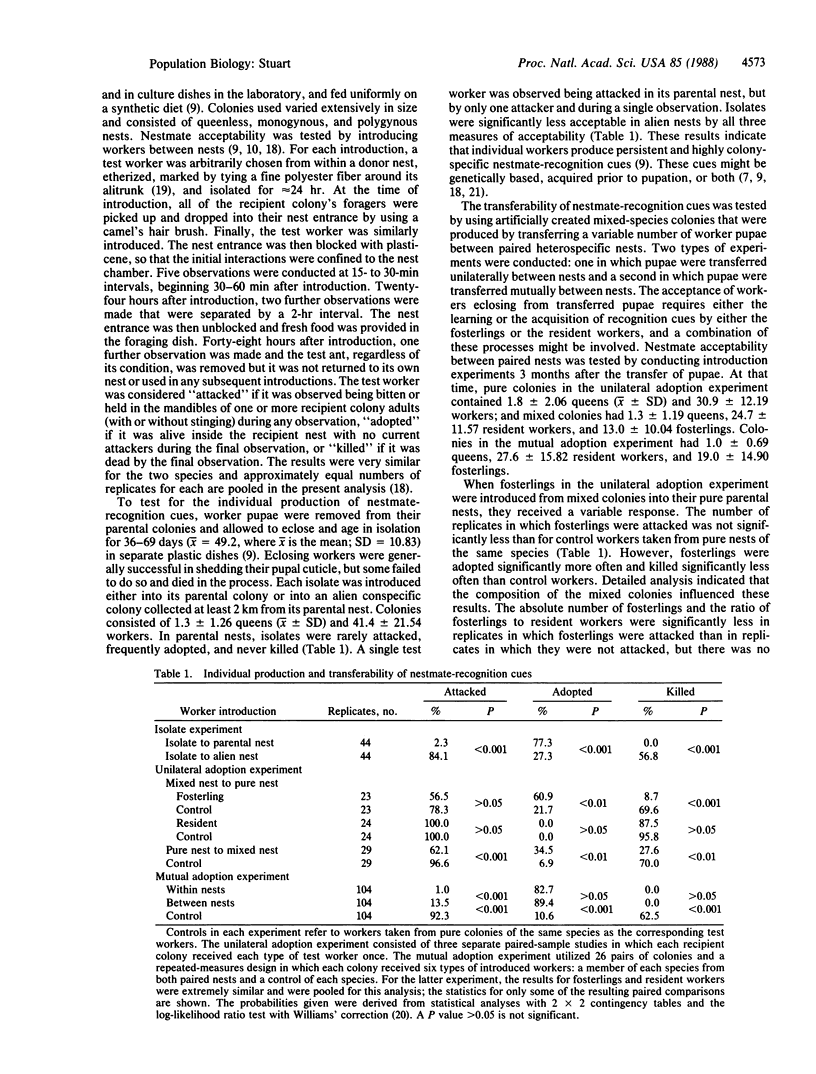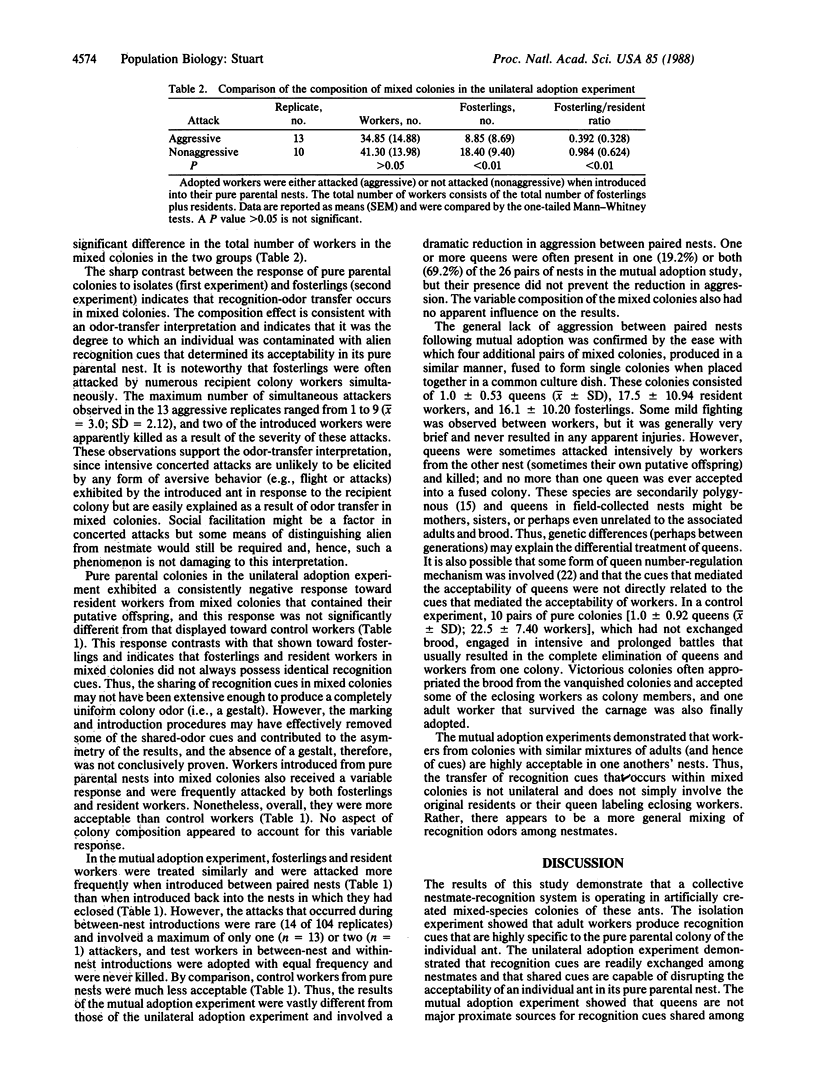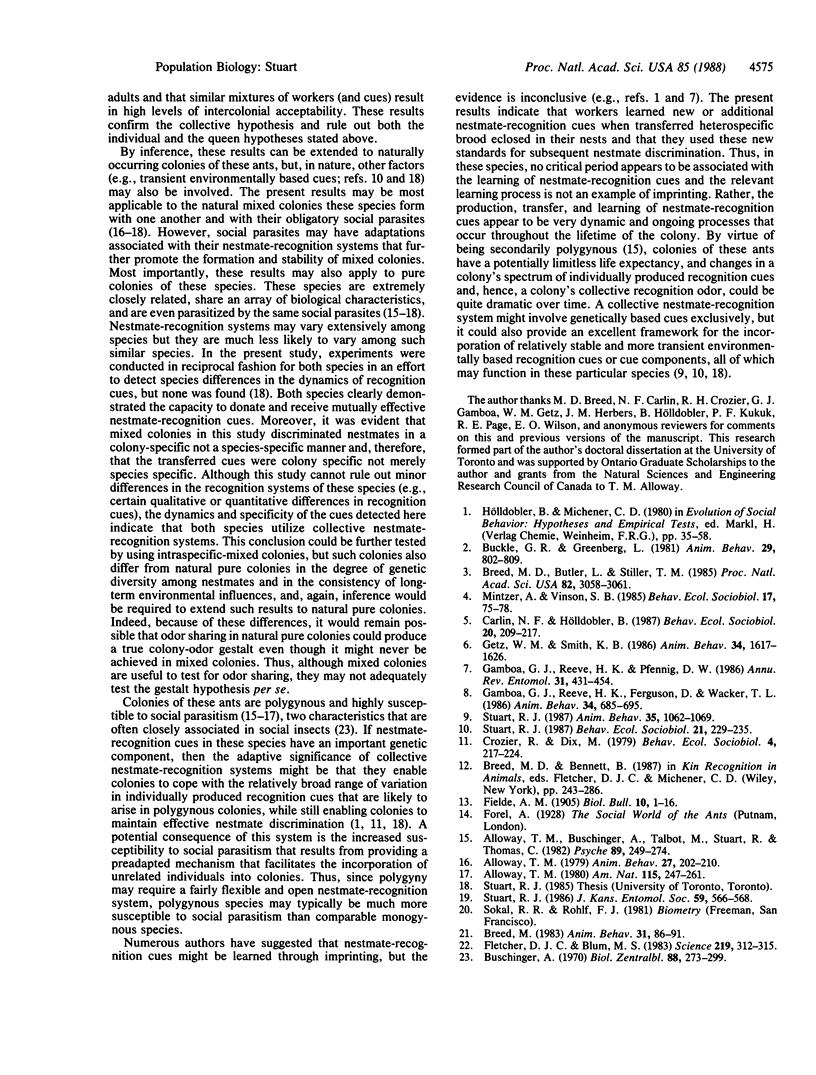Abstract
Three alternative hypotheses have been advanced to explain the dynamics of individually produced nestmate-recognition cues in colonies of social insects: (i) that there is no effective transfer of cues among nestmates (individual hypothesis); (ii) that cues are shared reciprocally among nestmates (collective hypothesis); and (iii) that cues derived from the queen are transferred to all colony members and dominate all other cues in nestmate recognition (queen hypothesis). In the present study, a bioassay based on aggression by laboratory colonies toward workers introduced into their nests was used in conjunction with isolation and interspecific-adoption experiments to test these hypotheses for colonies of two closely related, polygynous, and polydomous ant species, Leptothorax ambiguus and Leptothorax longispinosus. The results provide strong evidence for the collective hypothesis. A collective system has long been postulated as one of the primary modes of nestmate discrimination among social insects but to my knowledge has never before been clearly demonstrated.
Keywords: kin recognition, aggression, social insects, Leptothorax ambiguus, Leptothorax longispinosus
Full text
PDF



Selected References
These references are in PubMed. This may not be the complete list of references from this article.
- Breed M. D., Butler L., Stiller T. M. Kin discrimination by worker honey bees in genetically mixed groups. Proc Natl Acad Sci U S A. 1985 May;82(9):3058–3061. doi: 10.1073/pnas.82.9.3058. [DOI] [PMC free article] [PubMed] [Google Scholar]
- Fletcher D. J., Blum M. S. Regulation of queen number by workers in colonies of social insects. Science. 1983 Jan 21;219(4582):312–314. doi: 10.1126/science.219.4582.312. [DOI] [PubMed] [Google Scholar]


